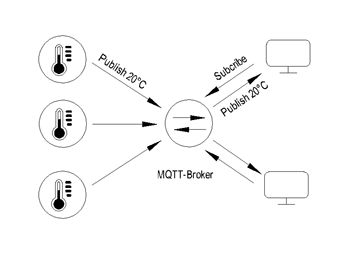Water Management For Irrigation System
A Blog on Water management for Irrigation System.
Introduction
On average, an irrigation system wastes 30% of the water used due to poor management and configuration. Wireless Sensor Networks (WSN) irrigation system improves the efficiency of the irrigation process of irrigation and can lead to savings for the end-user, not only monetary but also in terms of natural resources such as water and energy, and helps create a sustainable environment. The system can collect real-time data about temperature, humidity, and soil moisture and use them to determine the correct amount of water to be used in a garden or agricultural field. With just the temperature data, it is possible to create up to 26% savings in water. And it can go up to 34% when you combine temperature data with humidity, and soil moisture.
Wireless Sensor Networks (WSN) irrigation systems can directly collect real-time data to check the current garden conditions and cross-check this information with the weather forecasts, evapotranspiration, and ideal garden conditions. Then through artificial intelligence algorithms, the system can predict the real water needs for that particular garden and adjust the irrigation controller without human interaction. It is also able to detect the weather conditions such as rain or strong winds and schedule the best time to start irrigation.
Device and Process
To collect garden information in real time, the WSN system is composed of a set of hardware nodes. Nodes are responsible for the collection of sensor data, which communicate with each other using LoRa (low-power wide-area network) and with the server via MQTT(MQ Telemetry Transport) over WiFi. Then, a set of Software algorithms complements the network to store and analyze the collected data. The WSN is composed of a set of two different nodes, each with its responsibilities and features:
a) The aggregation node
A single gateway is responsible for maintaining the connected network and communicating with the server. It is responsible for receiving the messages sent from the sensor nodes and sending them to the server.
b) The sensor nodes
Multiple nodes are responsible for collecting sensor information and then transmitting them to the server.
The system architecture is shown in the Figure.

Hardware
Each node is composed of an ultra-low-power consumption microcontroller, with built-in WiFi, and is able to connect up to 18 analog sensors and a transceiver LoRa radio module capable of creating an encrypted multi-point network, that can communicate up to 2000 meters. A dipole flexible antenna is part of the hardware that forms the nodes.
The built-in WiFi connection is used by the aggregation node, however, in the sensor node, no WiFi connection is used, which allows this node to use the deep-sleep mode in order to run on batteries for a longer period of time.
Both types of nodes are enclosed in a box, to guarantee that environmental conditions such as rain, wind, heat or dust, and wildlife do not damage the electronics when placed in the implementation environment.
Only the sensor node can be powered by batteries since it is the only one that enters in deep sleep mode after collecting and transmitting the sensor data. The aggregation node, since it needs to always be listening to new sensor messages, is powered by a 5 V power adapter and a voltage regulator.
Since the sensor node is in deep sleep mode for almost 90% of each collecting cycle, the node can be powered by 2 AA batteries. The table presents the expected life cycle of the batteries,
| Interval | Battery Life Cycle |
| 10min | 2 Months |
| 30min | 5 Months |
| 1Hr | 13 Months |
| 4Hr | 3 Years |
| 12Hr | 5 Years |
| 14Hr | 10 Years |
The hardware architecture for the WSN meets the requirements of the current IoT systems and proves to be an optimization from the current solutions on the market. The system has the ability to perform in a low-power scheme thereby making it reliable in terms of battery replacements. The system can support a network of up to 250 nodes.
Communication
WSN is responsible for not only transmitting the collected data, but also keeping the network connected, and guaranteeing that the system can perform the tasks that were specified. The network can be expanded up to 5 km.
a) Node-to-Node Communication
LoRa is used to exchange information inside the WSN, from sensor information to actuator actions. LoRa is also chosen because of its long range and low power consumption.
A LoRa peer-to-peer network is implemented by using a radio transceiver. These modules are capable of using the LoRa protocol and allow the network to cover up to 2 km with up to 256 nodes
b) Node-to-Server Communication
To create a constant low-power data connection the MQTT protocol is adopted due to its high communication reach and low power consumption when compared to other protocols. MQTT is a messaging protocol built on top of the TCP protocol, that uses a publish/subscribe pattern, as shown in Figure.

Security
To implement the WSN irrigation system in a real-life scenario, all communications including radio transmissions and MQTT messages are encrypted using a private key.
Conclusion
The retrieved data from sensors could be processed using an intelligent and efficient algorithm to create an efficient irrigation schedule. And by keeping track of environmental status, such as rain or high humidity values, it is possible to detect if it is really necessary to irrigate. The irrigation system shows improvements of up to 26% when using temperature as an input parameter and 34% when combining more sensor data such as humidity and soil moisture.







.png)




No comments yet